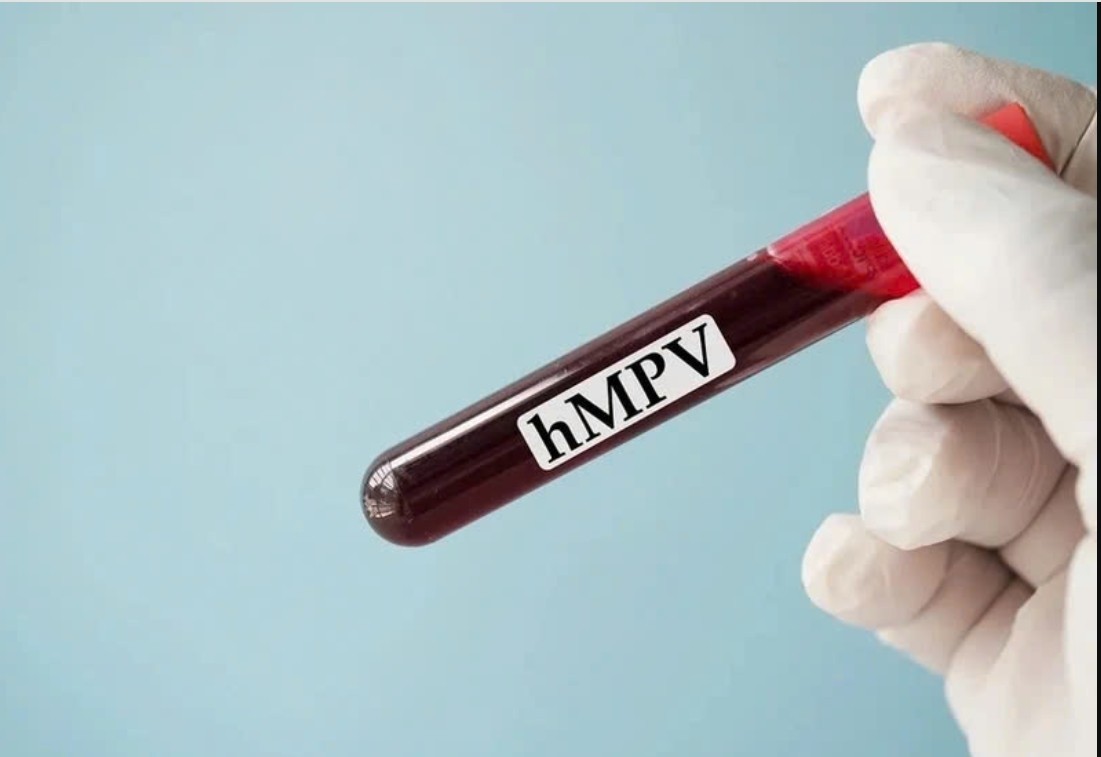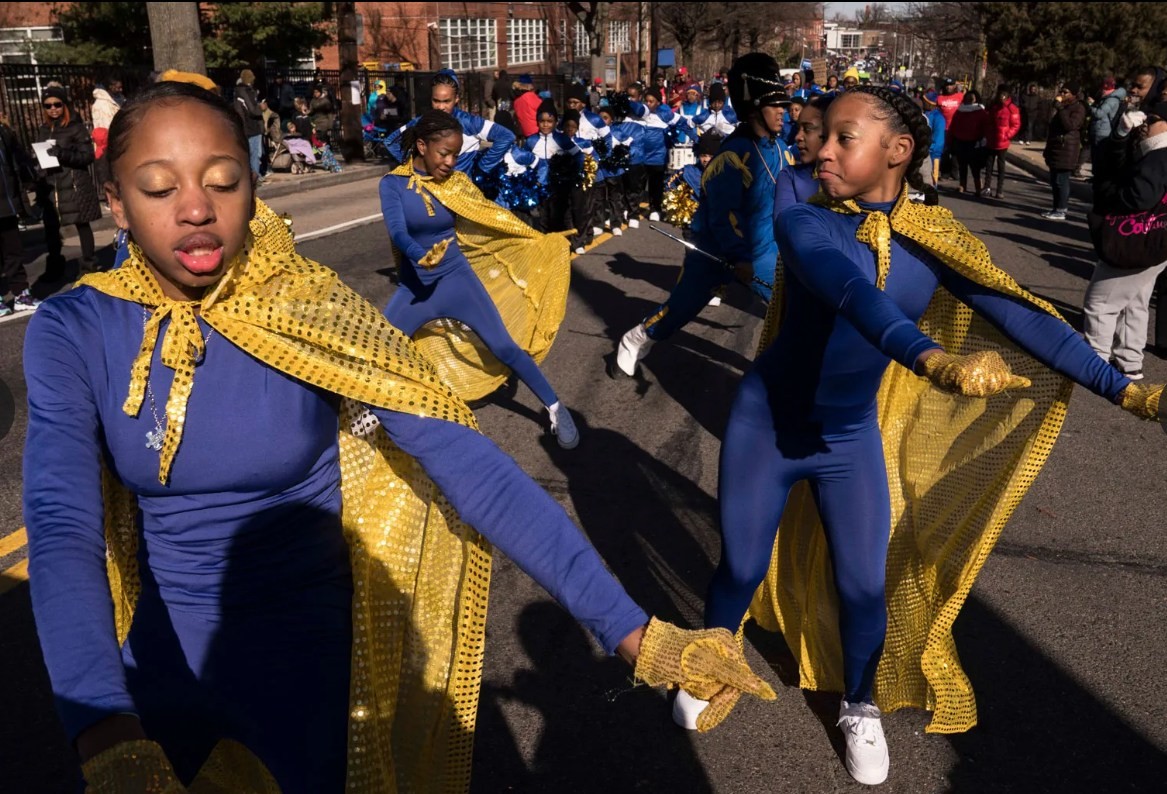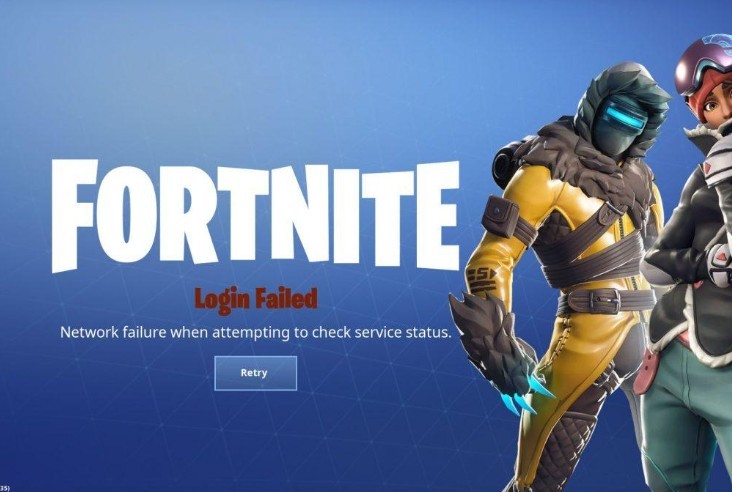What are Northern Lights that rarely comes into sight this week in the US?
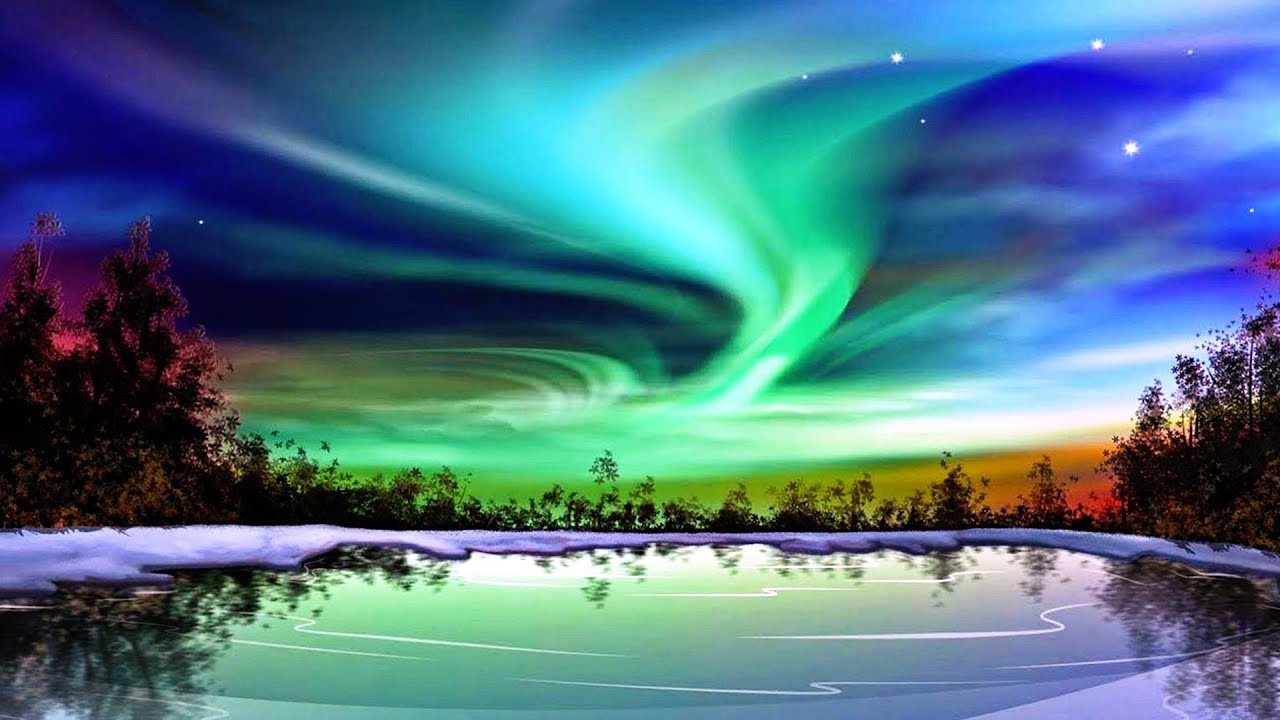 |
| Northern lights are one of the most spectacular natural shows on our planet. Photo: Youtube |
The Northern Lights are real. They’re one of the most spectacular natural shows on our planet, and yet many people don’t know a lot about them. Could you tell me if the Auroras are dangerous? Can the Auroras be seen with the naked eye? Do the Northern Lights make any sound? How cold should it be to see the Northern Lights?
If you don’t know the answer to some or all of these questions, don’t worry. KnowInsider will tell you what causes the Northern Lights and debunk some of the most enduring myths about the Northern Lights.
What are the northern lights?
As said from Capture The Atlas, the Northern Lights, also known as the Aurora Borealis, are an astronomical natural phenomenon consisting of displays of lights across the earth’s night sky, mostly visible at the highest latitudes of our planet. Specifically, the Northern Lights are the lights that are produced when loaded particles (cosmic radiation) collide with the oxygen and nitrogen atoms present in our magnetosphere.
Therefore, the Northern Lights are the result of billions of energized molecules that emit small flashes of light when they hit our planet, visible only at night.
What creates the northern lights?
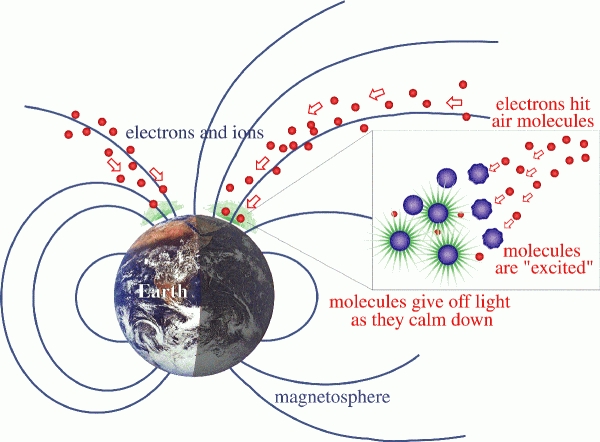 |
| Photo: Earth Sky |
The Earth's magnetic field serves as a sort of shield for all the radiation and magnetic waves that crash over the planet. The particles in the solar wind are drawn toward the north and south poles by the magnetic field. As that happens, the particles mix with the molecules in our atmosphere -- oxygen, nitrogen, etc. -- and that interaction creates the colorful display, according to Thrillist, .
The most commonly seen colors in the auroras are pink, green, yellow, blue, violet, orange, and white. Though, some of those colors are rarely seen. Space.com notes that when the particles combine with oxygen, you get yellow and green. When they interact with nitrogen, you'll see red, violent, and sometimes blue. Though, the site notes, it's more complicated than that because the type of collision and the altitude will impact the colors displayed as well. Red, for instance, only occurs at high altitudes. That color is rarely seen in northern regions where the aurora is most common because it will be taking place above the more easily visible colors that appear at lower altitudes.
Where can you see the northern lights?
You'll want to get as far north as possible if you're traveling to see the aurora. Alaska and Canada are outstanding places to see the northern lights. Likewise, Norway, Sweden, Finland, Iceland, Greenland, and the northern coast of Russia are also known for providing a great hub. When solar activity is heightened, you will sometimes see the lights reach further south through Canada to states like Montana, North Dakota, Minnesota, Wisconsin, Michigan, and Maine. Occasionally, major solar events will bring the display even further south.
When do the northern lights happen?
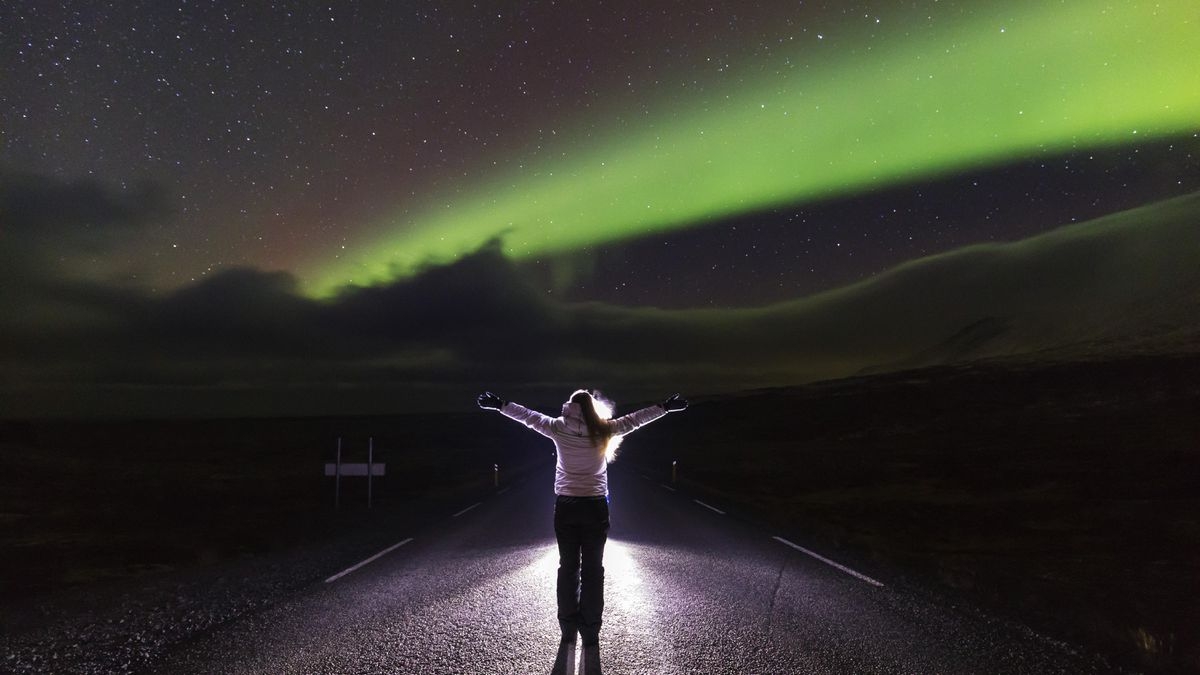 |
| The lights are present throughout the year, but winter is the best time. Photo: Forbes |
The lights are present throughout the year, but winter is the best time. That's partly because there's less light pollution. Especially in northern countries where there's considerably more sunlight in the summer months. However, under the right conditions, you can see them any time of year. That's because solar winds are always crashing into Earth. But you'll only be able to see the auroral display when it's dark. If you're in the Arctic Circle during the summer, there's little to no darkness and, thus, no ability to see the northern lights. The best time tends to be between September and April.
If you're going to start hunting them down, there are a lot of tools you can use. About 40 hours after sunspot activity, you'll get a brighter and more active aurora that often reaches further south than usual. The Space Weather Prediction Center's 3-Day Aurora Forecast is a good place to keep tabs on how sunspot activity impacts aurora sightings. There are also tools like Aurorasaurus and the SWPC's 30-minute forecast that track the northern lights around the world and may help you find a good time to get a glimpse.
UPDATE: Northern lights can be seen as far south as Virginia
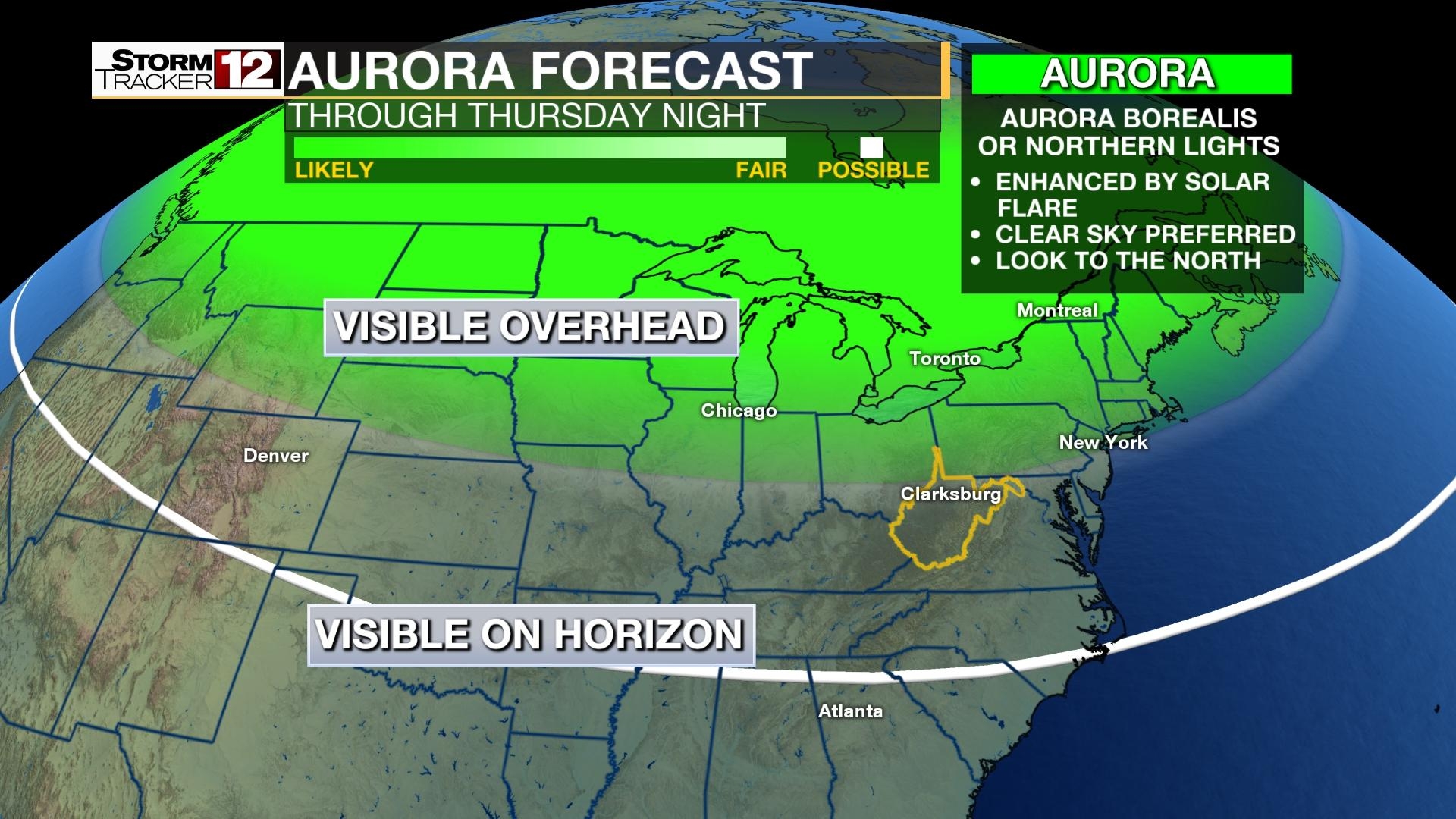 |
| Photo: WBOY.com |
Some of the world’s best places to see the northern lights — Iceland, Finland, and Sweden — are off-limits to international travelers, which makes this week even more of a treat for aurora chasers in the northern U.S.
Aurora borealis, a.k.a. the northern lights, could be visible across a much larger swath of the northern U.S. than usual tonight and Thursday. Nature’s spectacular light show may be spotted from the Pacific Northwest to New England and as far south as northern Illinois and Pennsylvania, according to the latest forecast from the Space Weather Prediction Center.
Light pollution makes it impossible to view the lights from major cities like New York, Seattle, and Minneapolis, but head out to an area that’s dark and you might just catch a glimpse. The Space Weather Prediction Center is forecasting a surge in aurora activity and has issued what it calls storm watches for Wednesday and Thursday nights.
You may want to save a little time to look up the next few nights. There is the potential the Northern Lights may be seen as far south as Pennsylvania, and in extreme cases, perhaps even across the Mid-Atlantic, as reported by WHSV.
According to the NOAA’s Space Weather Agency, a Coronal Mass Ejections (CMEs) is headed toward the Earth’s atmosphere sometime Wednesday or Thursday. The CMEs are large expulsions of plasma and magnetic fields from the Sun’s corona. Once these hit the Earth’s atmosphere they spread out and can often create the Northern Lights or Aurora Borealis. Even though this is a strong solar storm, for the northern lights to be visible this far south it needs to be a bit stronger.
| A spectacular display of the northern lights is possible this week, starting Wednesday, as far south as Pennsylvania and Oregon. There is a small chance the northern lights will be visible in the Philadelphia region, with the best viewing opportunity coming Thursday night, Philadelphia Cbslocal cites. The best chance at seeing the spectacle in our area will be north and west of the city, particularly in the Poconos. The best chance to see the aurora borealis will be under the cover of darkness and away from light pollution. The sun just released the equivalent of a massive solar belch, sending highly charged coronal matter across the solar system. Some of the sun’s energy will reach our atmosphere Wednesday night and Thursday, motivating stargazers to look toward the night sky in anticipation of the colorful, shimmering northern lights. |
For more interesting topics, please check out our KnowInsider!
|
Magnesium is an important mineral in our body. It produces energy and regulates blood sugar and chemical reactions in the body. This article introduces you ... |
|
When Neil Armstrong and Buzz Aldrin first set foot on the moon, they couldn’t pop champagne or light up sparklers (for obvious reasons). Instead, they ... |
|
The First University in the World: Over the centuries, the University of Al-Karaouine became a key spiritual and educational center in the Muslim world founded ... |




